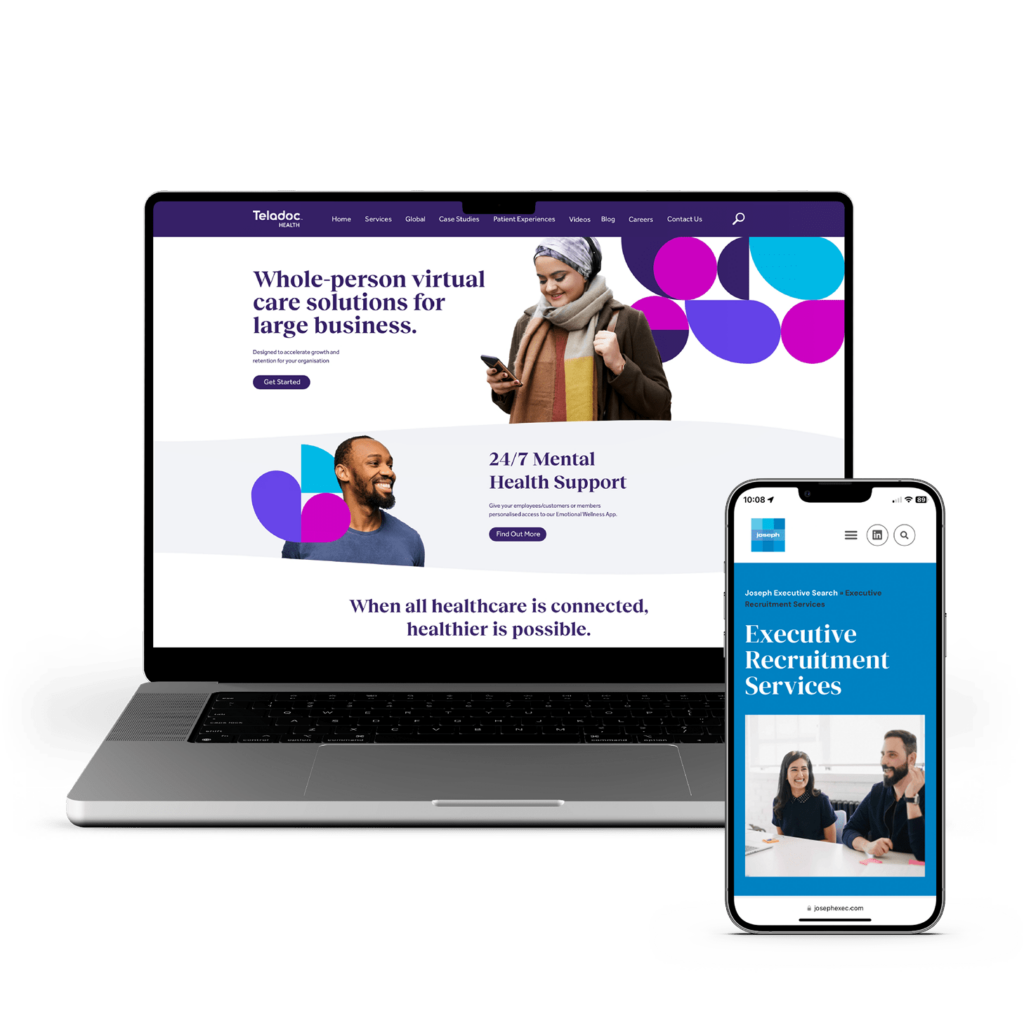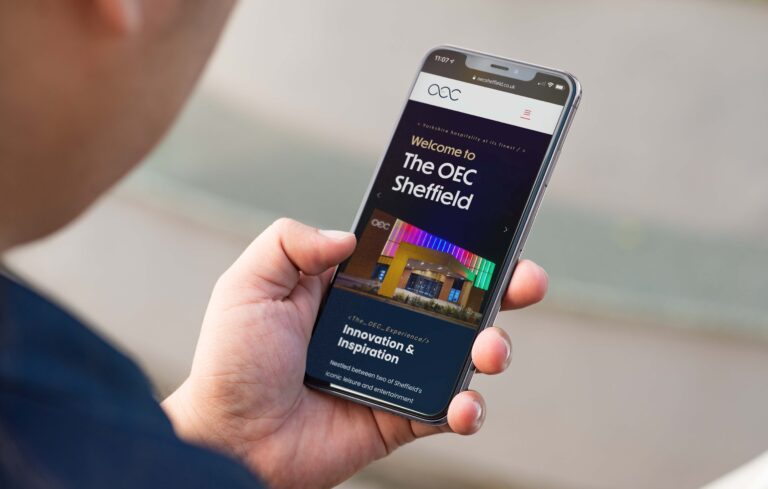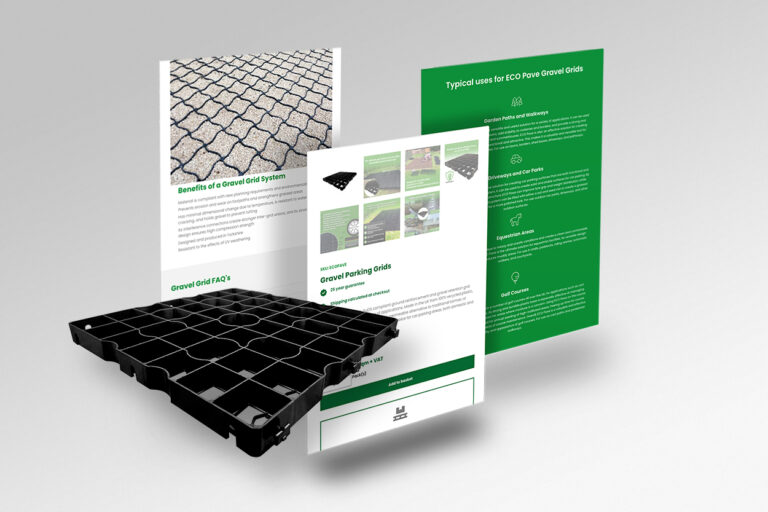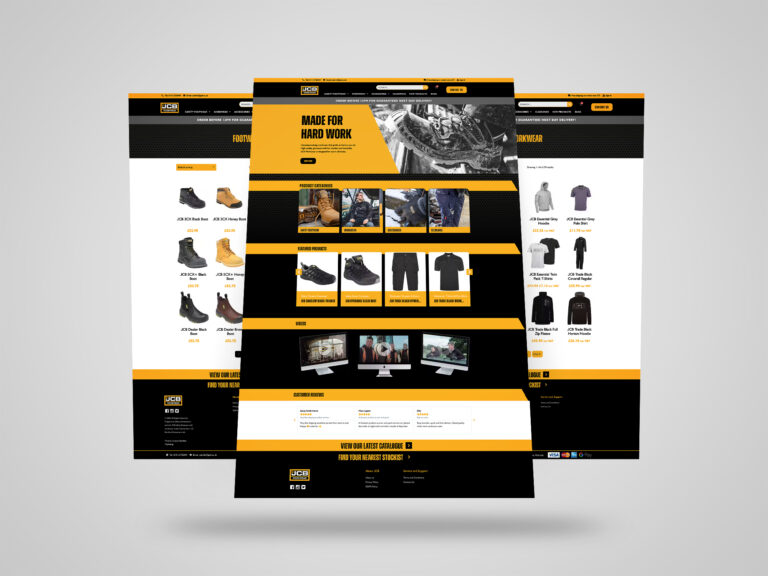Web Design and Development Services in Sheffield and beyond
As an award-winning web development agency, Fenti designs and builds hardworking websites – and we take web design and development seriously. Whether your business needs to increase leads, create a community, or simply sell online, you’ve come to the right place. Our Sheffield web design agency creates future-proofed, high-performance websites that deliver results; providing expertly informed and professional web design and development services to clients spanning numerous industries across the steel city, UK, and beyond.
Committed to simplifying your business’s web maintenance and proceedings, we build our websites using WordPress, the world’s most popular and user-friendly web management system. We won’t trap you with bespoke software so your site can be managed by anyone, including you.
For businesses wanting to update website content in-house, Fenti supplies a pre-configured site aligned with brand guidelines. Consistency is essential to successful branding and with our Sheffield web design agency, your website will be the perfect reflection of your brand, its services, and its people.
Did you know? We offer our services right across the UK – including Manchester, London, Leeds, Birmingham, Nottingham, Doncaster and more.
Our Sheffield Web Design Projects
Take Your Website To The Next Level With Fenti
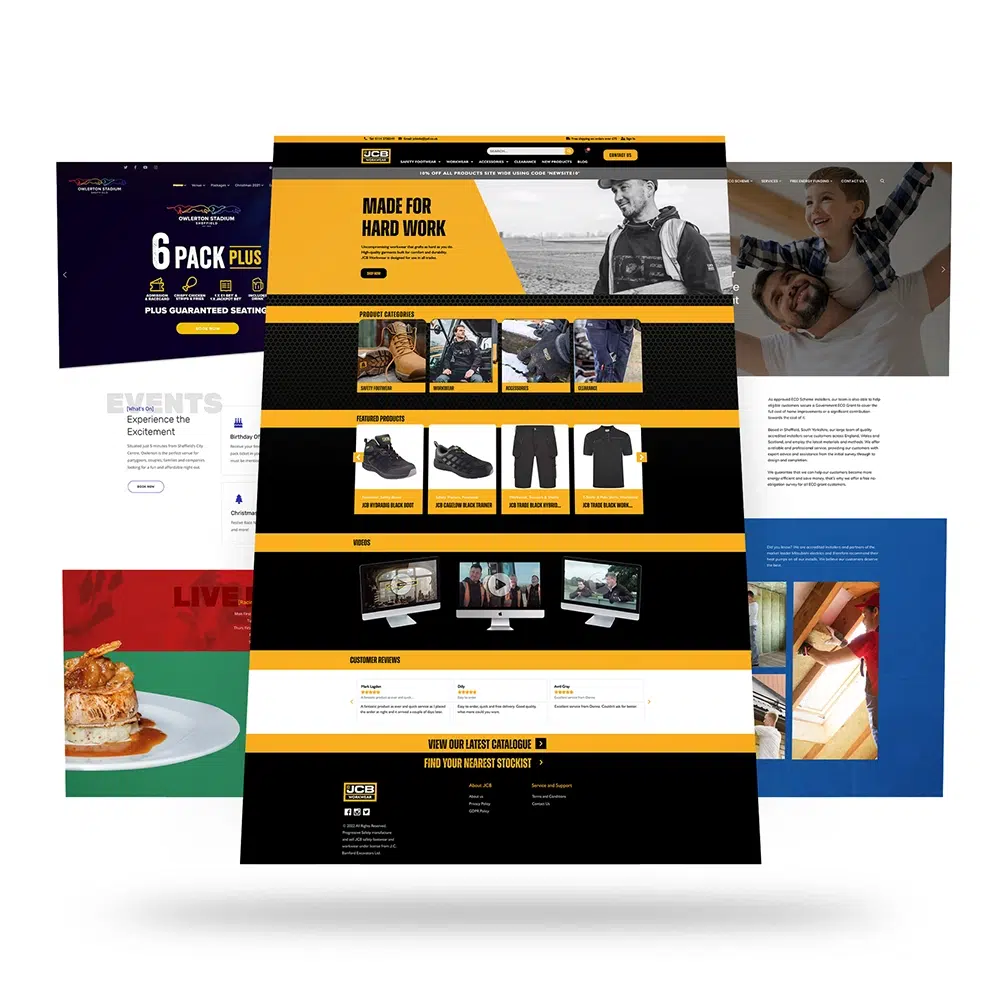
Professional Website Development Maintenance and Custom Web Services
Alongside our professional website development, we here at Fenti provide long-term web maintenance services to keep your site optimised and secure. Our web maintenance services include carbon-neutral hosting (where your website is stored), monthly security and general maintenance. Fenti also provides a comprehensive range of additional web services to meet individual business needs.
From online reservations and Ecommerce to live chat and customer portals, Fenti’s web design and development team have a wealth of experience to build the perfect website that fits the needs of your business. However, the journey doesn’t stop there! We offer services which continue to evolve site content and user experience on a monthly basis from web design and development onwards.
Pick and choose as many of our web services as you need, or budget allows. This can include copywriting, SEO, graphic design, photography, video, and animation. Or we can simply build a website populated with the content you provide – no matter what, Fenti Marketing has got your back when it comes to bolstering your online presence.
Your Expert Sheffield Web Design and Development Partner
The process of upgrading or building a brand-new website can be daunting but at Fenti, we aim to make the process as seamless and stress-free as possible. It all begins with a chat. Our goal is to understand your business, your products and services, and your customers.
Once we have the site foundations in place, we work to understand your business objectives and translate insight into a website. We gather all your existing or create new marketing assets such as images, video, graphics, brochures, and text, and start getting creative.
This is the stage where Fenti supply a series of design proposals for your new website. Choose your favourite and we start the build. This process includes site structure, content, and search engine optimisation to make sure Google finds and understands your site. Fenti provides a link to the draft site so you can see the project progress in real-time.
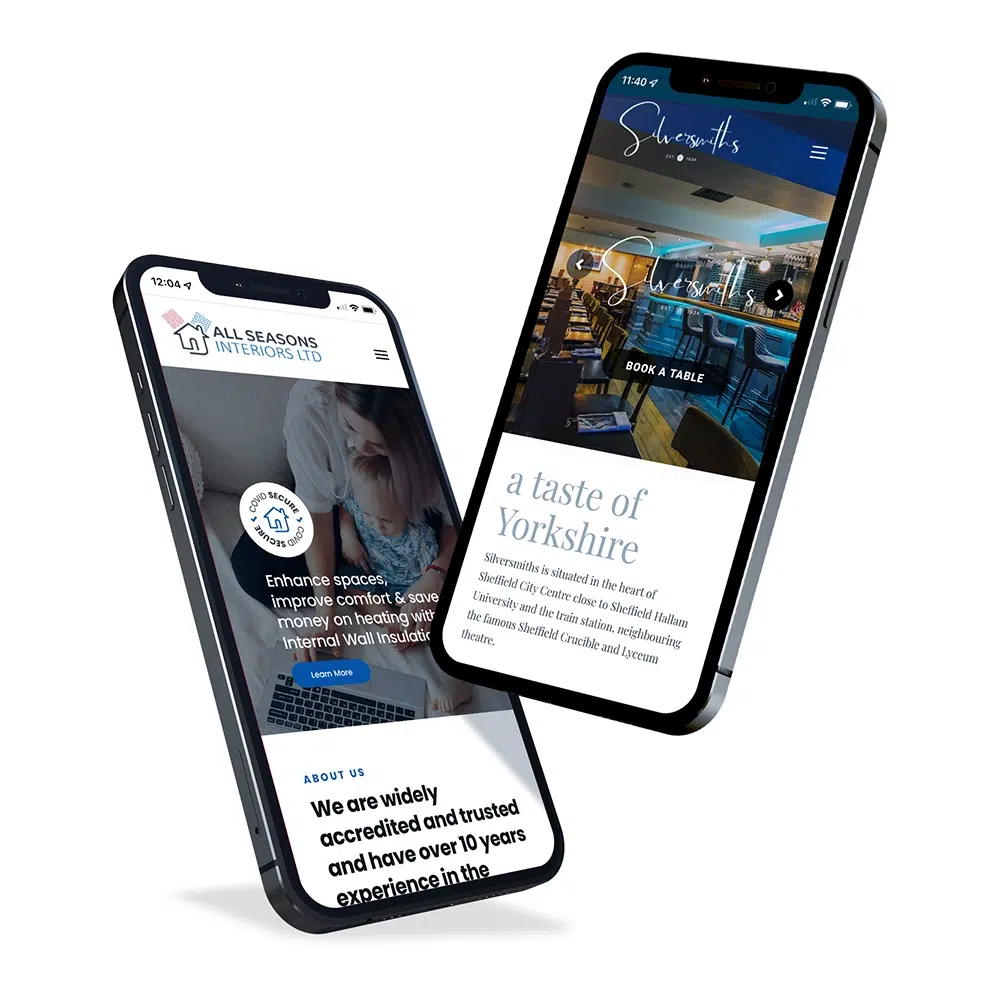
Green UK Web Hosting
We offer super-fast and super-secure green web hosting. If you’re looking for reliable hosting with abundant benefits including optimised caching, staging tools, SSD storage, automatic updates, clever database handling, load balancing, nightly backups of your website and much more, you’ve come to the right place.
We guarantee a hassle-free transition of your existing website to our web hosting, not to mention that our provider has data centres in both the UK and the US.
An added epic bonus is that the server we use is Green! This means that the mighty system is powered by 100% renewable energy and our autoscaling hosting platform is incredibly energy efficient.
Our Web Design and Development Process
For our web design and development services, we use WordPress with a full CMS and custom post types to ensure any addition to content is easily and correctly added to ensure consistency and best SEO practices. All websites we develop are carefully thought through in regard to the best user experience and ensuring optimal SEO.
Discovering Your Needs
We’ll undertake a scoping session to better understand your unique requirements and discuss the goals of your website – this could be to create more leads, improve user experience, or refresh your brand.
Creating a Sitemap
If required, we will create and propose the best possible sitemap framework for your website for improved user experience (UX) and SEO.
Designing Your Website
At Fenti, we always consider your bespoke requirements, and design your website with user experience, functionality, and mobile compatibility in mind; never using premade templates or designs
Developing Your Website
Once we have finalised the design of your site, we will then continue to develop the content on your site utilising either existing content or writing new SEO-optimised content.
Final Checks & Handover
Once the site has been developed, we then proceed with final post-site checks, optimisations, and handover.
Got Questions? We Have Answers!
What is web design?
Web design is a collaborative process, drawing on a range of disciplines within a web design agency such as graphic design, SEO, and copywriting, to deliver a finished product. Web design is the process of planning and arranging content on a website. The objective is to combine aesthetics (fonts, colours, graphics) with function (layout, navigation, accessibility etc.).
There are few businesses, if any, that can get away with not having a website. In the digital age, online presence is essential. Keeping pace with evolving technology means website design is now dynamic, to meet the growing functionality needs of both website owners and visitors.
What is the difference between web design and web development?
A web designer uses graphic and technical skill to design the visual appearance, layout, and usability of a website. A web developer uses coding languages such as HTML and JavaScript to build and maintain a website.
What is responsive web design?
Responsive web design is the process of creating web pages that function on all devices. A responsive website will automatically adjust scale and layout for different screen sizes such as tablets, smart phones, and laptops.
What is usability in web design?
Usability in web design is a measure of user friendliness. Elements of user experience includes:
- Availability and Accessibility
- Fully functioning, good page load speed, active links i.e. not broken, responsive
- Clarity
- Consistent experience free of distractions and the user finds exactly what they want
- Learnability
- Simple to use and intuitive website, using web design concepts familiar to the user
- Credibility
- Perceived trustworthiness is essential to all websites, not just ecommerce sites
- Relevancy
If site content is not relevant to the user, the website will not achieve its objectives.
What is a web design agency?
A web design agency is where you will find web designers creating websites. They are often surrounded by a range of disciplines to draw on during the making of a website. As an agency, rather than a single web designer, they provide a complete service, from design to go-live and beyond.
The result should be a hardworking website that gets the job done. A professional finish is usually the best way to make the right impression on visitors. Furthermore, a functioning site that ticks along in the background is a great way to bringing in leads. The best way to achieve this is with a web design agency.
How much does web design cost?
Initially, web design cost depends on how your website is built. The DIY approach is to use a website builder like Wix or Squarespace, or by hiring a web design agency to do it or you. DIY is always a fraction of a professional job however, if you are serious about growing your business, website quality is essential.
Depending on who you go to and how complex your site is, web design can cost anything from a few thousand to tens of thousands of pounds. If you are being quoted the latter for a simple 10-page site, you are probably being taken for a ride.
How do I find a good web design agency?
Check out who has built relevant websites you like and also who your competitors and industry leaders are using. You can usually find a link to the web design agency right at the bottom of every page – if they’re doing their job right.
Go along to local business networking events and get chatting. Check out your contemporaries websites and ask who they used. Find out if they had a good experience with their web design agency and if they felt the project delivered value for money.
Put together a website brief, send it off to at least three agencies and see what comes back for comparison. The more information you provide at this stage, the more realistic the quote will be from the outset, saving you from toing and froing down the line.
Read the guide to what to look for in a web design agency for more insights.
Fenti offer free advice on how you can make every penny of your marketing budget work hard for your business. We’d be happy to have a chat about your website and perform a free, no-obligation site audit to see how hard your website is working.
